Cloth diapers are an eco-friendly and economical choice for many parents. However, like any fabric product, they require proper care to function at their best. This article explores routine cleaning practices for cloth diapers and emphasizes the importance of following the manufacturer’s instructions.
Building a Solid Routine
Regular cleaning is essential for keeping cloth diapers functioning optimally. Here’s why:
Prevents Buildup:
Diaper creams, minerals in hard water, and everyday use can lead to residue buildup on the fabric. This buildup can reduce absorbency and cause leaks.
Maintains Hygiene:
Regular cleaning removes waste and bacteria, keeping your baby healthy and comfortable.
Extends Diaper Lifespan:
Proper care helps diapers last longer, saving you money in the long run.
Always follow the specific washing instructions provided by the diaper manufacturer. Most cloth diapers can be machine-washed and dried on low heat.
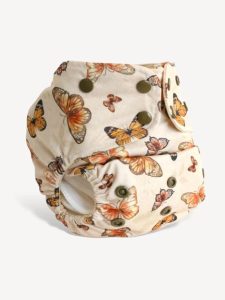
Creating a Cleaning Process
Here’s a basic routine for cleaning cloth diapers:
-
Solid Waste Removal: Scrape or spray off solid waste into the toilet before washing.
-
Pre-Rinse: Some washing machines have a pre-rinse cycle. If not, you can pre-rinse diapers in a separate basin.
-
Main Wash: Wash diapers with a gentle detergent specifically designed for cloth diapers. Avoid using fabric softeners or harsh chemicals.
-
Drying: Line dry diapers in the sun whenever possible. Sunlight has natural disinfecting properties. Alternatively, tumble dry on low heat.
Sticking to this routine will help keep your cloth diapers clean, absorbent, and ready for reuse.
Addressing Occasional Stains
If you encounter stubborn stains on your cloth diapers, there are a few gentle cleaning methods you can try:
-
Sunning: Sunlight can help fade some stains naturally. Lay stained diapers out in direct sunlight for several hours.
-
Spray Wash: A handheld sprayer can help loosen and remove stubborn waste before washing.
-
Spot Cleaning: For particularly difficult stains, you can pre-treat with a paste of baking soda and water. Let it sit for a few minutes before washing.
Always test cleaning solutions on a small, inconspicuous area of the diaper first.
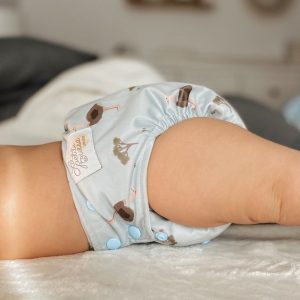
Importance of Manufacturer Guidance
Consult the diaper manufacturer’s instructions for specific cleaning recommendations. Some diapers might have special requirements or limitations. Following these guidelines will ensure you’re cleaning your diapers safely and effectively.
Seeking Additional Support
If you have questions or concerns about your cloth diaper cleaning routine, there are many resources available to help:
-
Online communities: Connect with other cloth diaper users online. Many online forums and groups offer advice and support.
-
Retailers: Cloth diaper retailers are knowledgeable about different diaper types and can provide specific cleaning recommendations.
-
Diaper services: Some diaper services offer cleaning and laundering as part of their rental package.
By following a regular cleaning routine, referencing manufacturer instructions, and seeking help when needed, you can ensure your cloth diapers provide optimal performance for your baby.
Understanding Stripping: A Last Resort
Stripping is a deep cleaning process designed to remove all buildup from cloth diapers. This includes natural oils and minerals that can actually improve absorbency. While it can be effective in addressing severe issues, stripping is considered a harsh method and should only be used as a last resort. Here’s why:
-
Harsh on Fabric: Stripping can damage the fabric of your diapers, potentially shortening their lifespan.
-
Not a Regular Cleaning Method: Stripping is not a substitute for routine cleaning. It should only be used in rare cases where your diapers are experiencing severe absorbency problems.
-
May Not Solve the Problem: Sometimes, other factors like improper washing routine or detergent build-up might be causing absorbency problems. Stripping won’t address these issues.
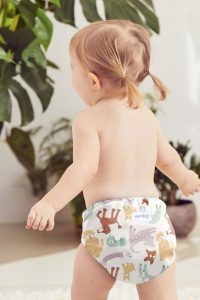
Exploring Alternatives Before Stripping
There are several gentler methods you can try before resorting to stripping:
-
Hot Water Wash: Run a hot water wash cycle (around 140°F/60°C) with your regular cloth diaper detergent. This can help remove some buildup.
-
Extra Rinse Cycle: Add an extra rinse cycle to your regular wash routine to ensure all detergent residue is removed.
-
Water Softener: If you have hard water, consider using a water softener specifically designed for cloth diapers. This can help prevent mineral buildup in the first place.
-
Consult a Trusted Resource: If you’re unsure about the cause of your absorbency problems, consult with a trusted resource like a cloth diaper retailer or a cloth diapering group online. They can help you troubleshoot the issue and determine if stripping is truly necessary.
By trying these gentler methods first, you might be able to resolve the issue without resorting to the harsh stripping process.
Stripping cloth diapers can be an effective solution for severe absorbency problems, but it should only be used as a last resort after exploring other options. Remember, proper routine cleaning is the best way to maintain the absorbency and lifespan of your cloth diapers. If you’re unsure about stripping, consult with a trusted resource for personalized advice.
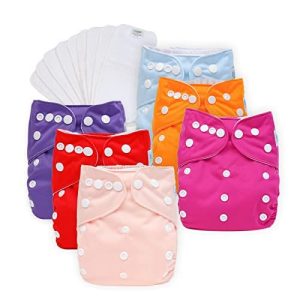
Troubleshooting Absorbency Issues
If you’re experiencing absorbency problems with your cloth diapers, there are steps you can take to identify the cause and address it without resorting to stripping. Here’s how:
-
Review Your Routine: Double-check your current cleaning routine. Are you following the manufacturer’s instructions? Are you using the right detergent and avoiding fabric softeners?
-
Inspect Diapers: Look for signs of wear and tear on your diapers. Worn-out diapers might lose absorbency.
-
Consider Water: If you have hard water, mineral buildup can impact absorbency. Explore using a water softener designed for cloth diapers.
-
Seek Help: If you’re still unsure, consult a trusted resource like a cloth diaper retailer or an online cloth diapering group. They can offer personalized advice based on your specific situation.
The Importance of Prevention
By following a proper cleaning routine and addressing potential issues early on, you can help prevent the need for stripping altogether. Here are some preventative measures:
-
Follow Manufacturer’s Instructions: Each diaper brand might have specific cleaning recommendations. Following these guidelines ensures optimal care for your diapers.
-
Choose the Right Detergent: Use a gentle detergent specifically formulated for cloth diapers. Avoid harsh chemicals and fabric softeners.
-
Sunning: Whenever possible, line dry your diapers in the sunshine. Sunlight has natural disinfecting properties.
-
Regular Inspection: Inspect your diapers regularly for signs of wear and tear. Replace worn-out diapers promptly.
By taking these preventative steps, you can maintain the absorbency and lifespan of your cloth diapers, reducing the need for stripping.
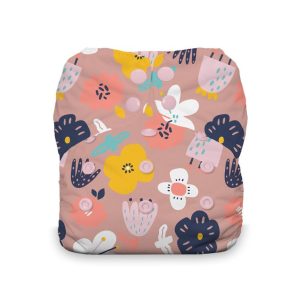
Conclusion
Stripping cloth diapers can be a last resort for severe absorbency problems. By following a proper cleaning routine, addressing potential issues early on, and taking preventative measures, you can keep your cloth diapers functioning optimally for your baby. Remember, consulting trusted resources for personalized advice can be extremely helpful in maintaining a successful cloth diapering experience.





